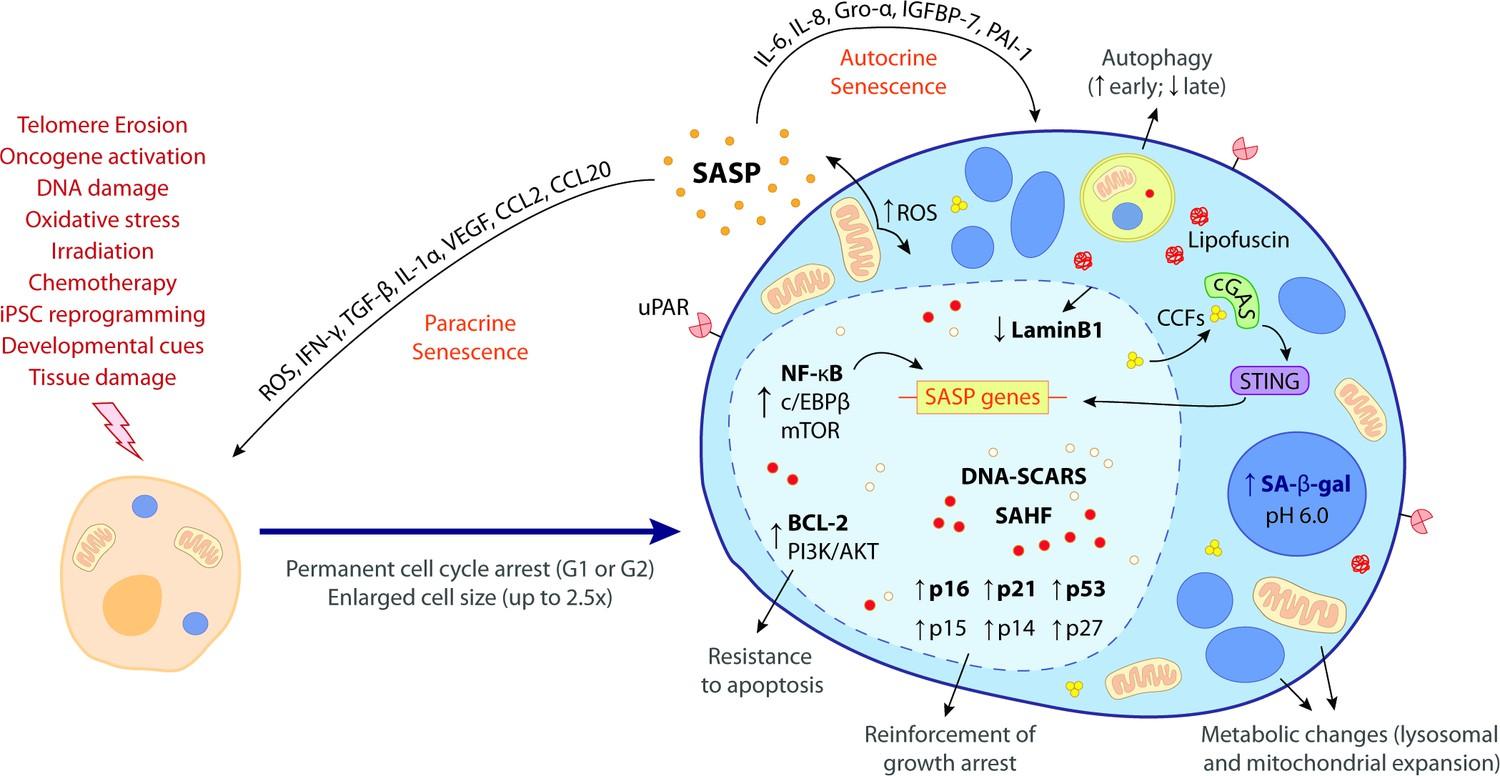
The Role of Senescence in Age-Related Diseases
Senescence, also known as the process of aging, is a natural and gradual deterioration of functional characteristics in living organisms. It is a complex phenomenon influenced by both genetic and environmental factors. Senescence can be categorized into two main types: cellular senescence and organismal senescence.

Cellular senescence occurs when cells lose their ability to divide due to DNA damage or telomere shortening. This transformation can result in cell decline or destruction through self-destruction (apoptosis) or a period of decline (senescence). Cellular senescence plays a crucial role in the body's natural defense mechanisms by limiting the proliferation of damaged cells and preventing potential malignant cell transformation.
As we age, our bodies go through a process called senescence, which is characterized by a gradual decline in functional characteristics. This process plays a significant role in age-related diseases, such as cancer, cardiovascular disease, diabetes, and neurodegenerative disorders.Senescence is a cellular response that involves a stable growth arrest and other phenotypic alterations, including a proinflammatory secretome. While senescence serves as a protective mechanism during normal development and tissue homeostasis, its accumulation in aged tissues can have detrimental effects.
Cellular senescence is a fascinating and complex process that plays a crucial role in the aging of organisms. It is a state of irreversible growth arrest that occurs in cells when they are exposed to various stressors or damage. This can include DNA damage, telomere shortening, oxidative stress, and oncogene activation. When cells enter senescence, they undergo a series of phenotypic changes, including alterations in gene expression and the secretion of proinflammatory molecules.One of the key features of cellular senescence is the activation of tumor suppressor pathways, such as p53 and p16/Rb, which enforce the growth arrest. These pathways are responsible for halting the cell cycle and preventing the proliferation of damaged or dysfunctional cells. The activation of these pathways is essential for maintaining tissue homeostasis and preventing the development of cancer.
Senescent cells also exhibit a unique secretory phenotype known as the senescence-associated secretory phenotype (SASP). The SASP is characterized by the secretion of various cytokines, chemokines, growth factors, and matrix metalloproteinases. This secretome can have both beneficial and detrimental effects, as it can promote tissue repair and remodeling, but also contribute to chronic inflammation and tissue dysfunction.

Recent research has shown that targeting senescent cells can extend lifespan and improve health span. Genetic or pharmacological ablation of senescent cells has been found to reduce age-related pathologies and improve overall health. This has opened up new therapeutic avenues for treating age-related diseases by targeting senescence.
As our understanding of senescence and its role in aging and age-related diseases continues to grow, researchers are exploring various therapeutic approaches to target senescence and potentially improve health span and extend life span.
Recent Posts
- The Role of Senescence in Age-Related Diseases 06 June 2024
- Terms & Conditions 03 June 2024
- How rehabilitation tools affect people with disabilities 09 May 2023
- The Barriers of Physical In Daily Activity For Disabilities People 06 June 2024
- The Cost Considerations in Acquiring Automatic Nursing Beds 29 September 2023

